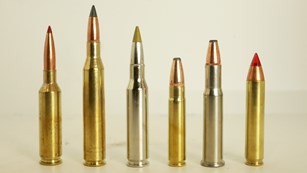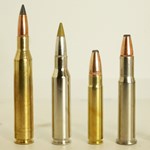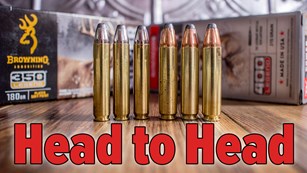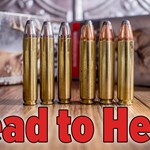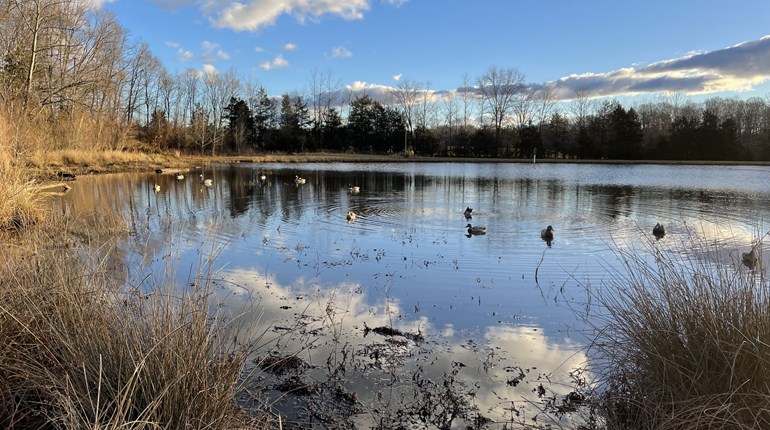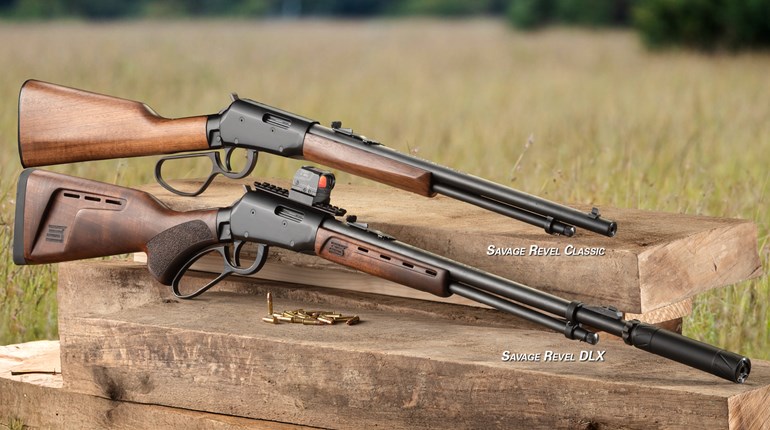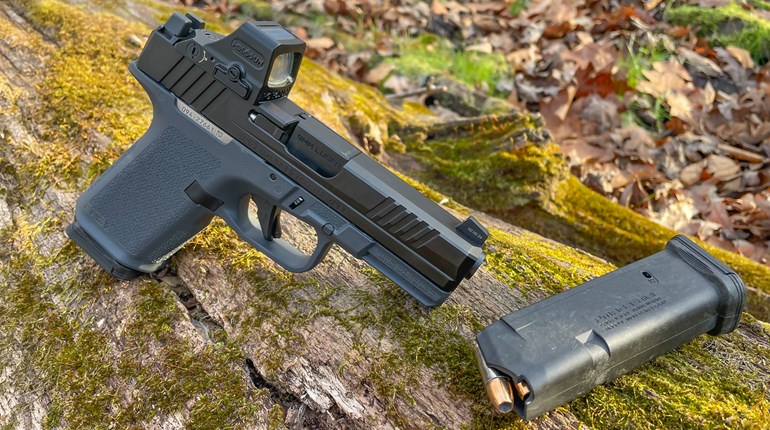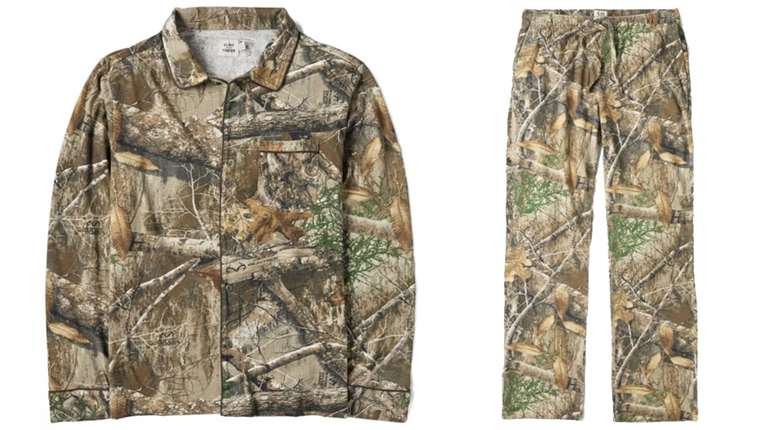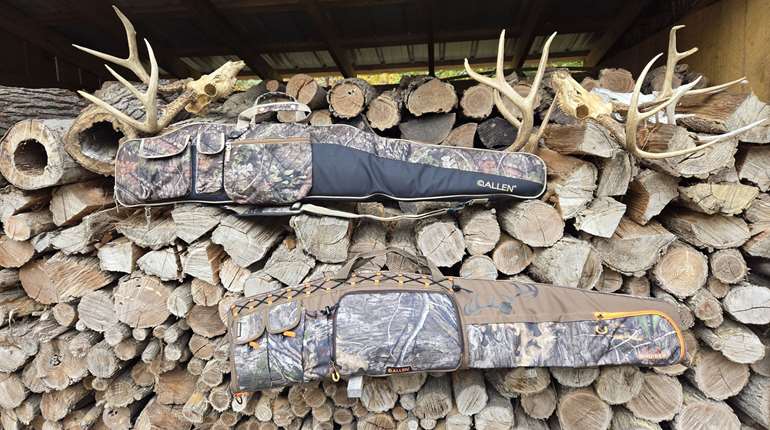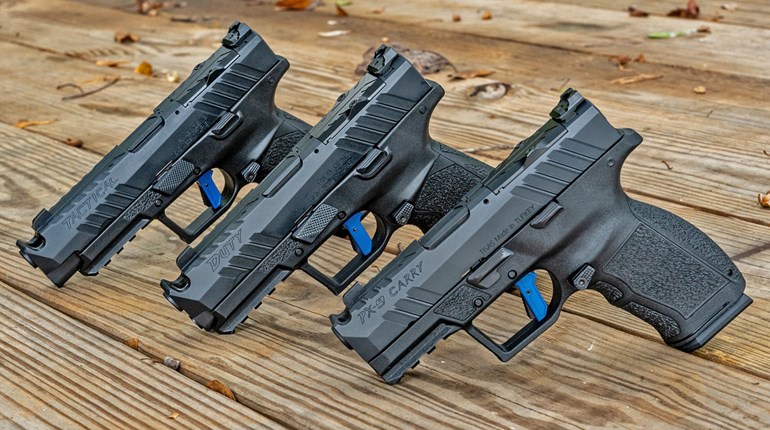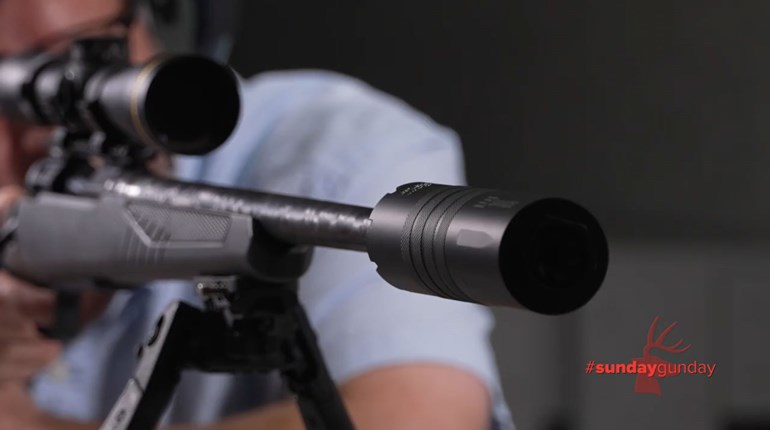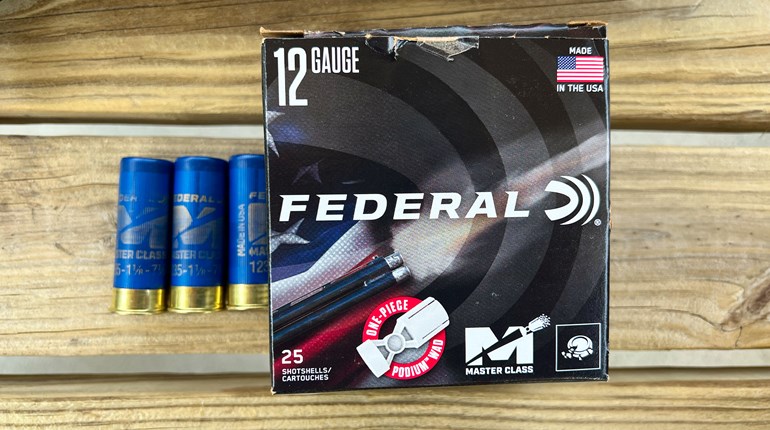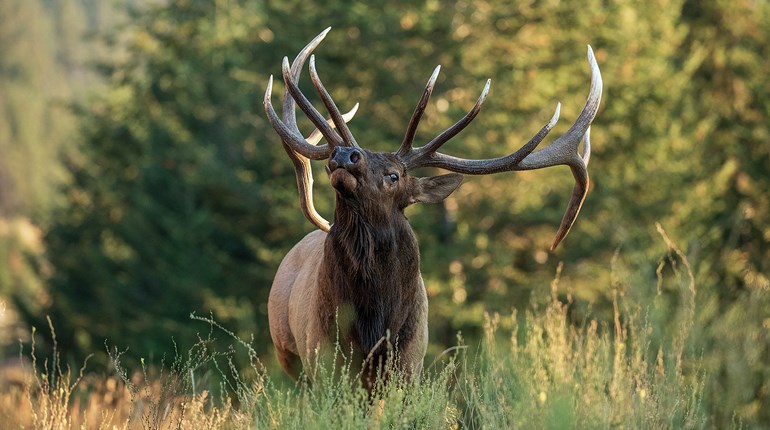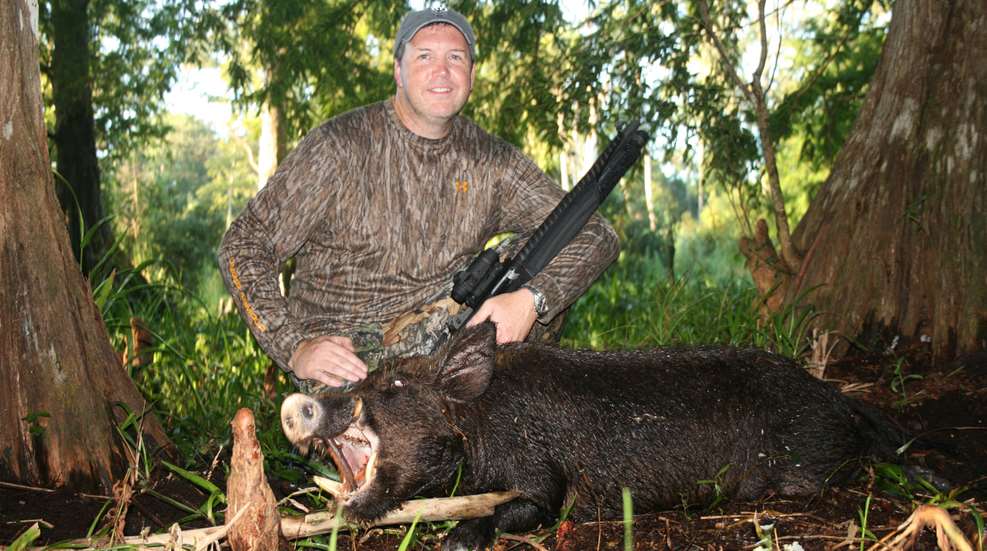
While whitetail deer are perceived to be America’s most pursued big-game species, the lowly feral swine also takes the podium, or at least receives an honorable mention. Attributing to its popularity are liberal—if not unending—seasons and bag limits (if any), as well an overabundance of animals and wide dispersion. What’s more, they can often be hunted alongside other more desirable game, such as turkeys, quail, whitetail deer, etc., when found in the same area—a true bonus—and using myriad methods. Did I mention they’re delicious, too?
Hunting feral swine requires little in the way of gear; however, attention to detail when picking items will improve your odds of bagging an animal. The same can be said of knowledge of the animal, it’s location(s), habits, and anatomy, among other things. That’s the purpose of this article.

Definitions & Distribution
Before delving into techniques and gear, it helps to understand the quarry. The terms “wild boar,” “feral hogs,” “wild pigs,” and others are used to name “feral swine,” and that’s technically incorrect. Here’s why: According to the U.S. Department of Agriculture Animal and Plant Health Inspection Service, “Feral swine are not native to the Americas. They were first brought to the United States in the 1500s by early explorers and settlers for food.” Allowing them to free range, as well as escapees from enclosures, created the first feral swine. No problem, right? Wrong.

“In the 1900s, the Eurasian or Russian wild boar [my italics] was introduced into parts of the United States for the purpose of sport hunting,” explained the USDA. “Today feral swine are combination of escaped domestic wild pigs, Eurasian wild boars, and hybrids of the two.” See the reason for the misnomer? I’ll refer to them as feral swine.

So, how many are there? According to Texas Parks & Wildlife website, “From 1982 to 2016, the wild pig population in the United States increased from 2.4 million to 6.9-million animals.” For comparison sake, there are an estimated 30-million white deer in the continental U.S. Given that sows that have two litters per year, with 4-6 piglets each, it’s challenging to slow their spread. Oh, and “reproductive maturity has been documented in female wild pigs as early as three months of age,” reported the aforementioned website. See the problem.
The USDA’s “Federal Swine Populations 2024 by County” map (pictured above this section) is startling, even to someone who has hunted them in numerous states and via most legal methods. That they’re found throughout the Deep South is unsurprising; however, they’re not content with staying there. The abovementioned map shows populations in Oregon, Nevada, Utah, West Virginia, Michigan, Vermont, and, of all places, North Dakota. And that’s just the beginning. They’re even showing up in my home state of Virginia. While this is bad news for farmers, it also means that there are more places to pursue them. Let’s look at some of those options.

Different States, Different Practices and Regulations
Regulations change frequently, so be cognizant of the present laws of the state you intend to hunt. For example, according to the “2024-2025 California Big Game Digest,” hunting “wild pigs” only requires a license and validation; wild pigs no longer need to be tagged, but they’re harvest must be reported. That’s how we know that, during the 2023-24 season, 3,327 pigs were reported being taken. Reporting feral swine harvest is rare.
By the way, the feral swine population in California is reported to be between 200,000 and 400,000 animals—little wonder why even the ultra-liberal governor loosened restrictions. But that pales in comparison to the estimated 2.6-million hogs in Texas, and Oklahoma is ranked second with 1.5-million oinkers. Multiple sources, including worldpopulationreview.com, round out the top five with Louisiana, Georgia, and Florida, with the latter having an estimated 500,000 animals. Even Hawaii has 400,000 roaming the island. Why does matter? You want to hunt where the numbers favor success, as well as states where your hunting style and expectations will be met.

As an example, when hunting California, longish shots are a possibility, as well as much glassing and stalking—exactly like western big-game hunting. Not so much in the lowlands of South Carolina or Georgia, where hunting with the aid of dogs or over corn is commonplace. By the way, when hunting with dogs, you can even bring an end to the hunt very swiftly with a knife, if you’re so inclined, though it and spear hunting aren’t permitted in California. There’s also the increasing use of thermal optic-equipped night hunts, as well as hunting overlooking illuminated bait piles and even aerial gunning. The latter is not only legal in Texas, but it’s an effective way to reduce dense populations of wild pigs in opens areas—until they get wise to it or take up residence elsewhere. The same can be said of chasing down feral swine in the Louisiana swamps. As you’d expect, cost varies greatly. The least costly hunts will be those over bait and minimal guide interaction, while aerial gunning is the costliest.

Given the diversity of pursuit methods and terrain, you must find an outfitter and location that lines up or you’ll assuredly be disappointed. For example, “hunting” and “eradication,” or “eliminating,” are far different, so don’t expect to sit over dispersed corn in South Carolina with the expectation that you’ll kill the quantity of swine that you’d achieve when chasing multiple sounders per day with a helicopter. Personally, I prefer spot-and-stalk hunting, such as I did with Camp Five Outfitters of Paso Robles, California, as well as hunting over bait during daylight. But to each their own.
For my son’s first hog hunt in South Carolina, which concluded a week prior to the writing of this article, we hunted from elevated stands over dispersed corn, and we were restricted to boars only. While this certainly didn’t appease local farmers’ concerns over agriculture loss, it was a smart business model in a sense; you’re practically guaranteed to see feral swine, though boars of decent size were expectantly absent. But that’s a different story. Such hunting permits viewing and judging the quarry for longer periods, and there is less pressure. It’s a great way to be introduced to feral swine hunting, provided that the guide service isn’t overhunting the area.

Gear
There’s much debate about what it takes to kill wild swine. While they are “thin-skinned game,” males develop a “shield” or “plate” from cartilage, with fat creating extra thickness. Mature sows carry extra fat, too, so the projectile or broadhead must defeat much to get to the vitals from a broadside shot. Should that blood coagulate and the hole(s) plug (even with fat), tracking it could be challenging at best and potentially dangerous in thick brush or swamps. Feral swine can be surprisingly tough, too. For these reasons, it’s advisable to “use enough gun,” or a sufficiently tough and deep-penetrating broadhead. What does that mean?
If you and your rifle are capable of achieving pinpoint accuracy at the distances you’ll be hunting, and elect for a brain shot, using a large caliber isn’t critical. But, what happens with a “trophy” boar emerges and fails to give the coup de grace shot on the cerebrum? Are you confident trying to “punch the plate,” or tuck that tiny projectile behind the shoulder? Why risk it. Here’s a better option.

If it’s legal for deer hunting, then it’ll work for hogs—given that the proper projectile is selected. More on that in a moment. The axiom “bigger is better” is applicable here, but within reason, of course. On my son’s recent hunt, the guide told us about how a young teenager used a .243 Win. to anchor a 500-pound plus feral pig on the property. Not my first choice, but a stout smaller bullet in the vitals trumps larger one in peripheral areas. Still, going up to the .25s, 6.5s, .277s, .284s, and .308s are better choices. Larger diameter projectiles leave bigger holes, though penetration can suffer with poor bullet choice. Magnums aren’t necessary, but can help with flatter trajectories when chasing hogs in California or in large agricultural fields.
When selecting a bullet, I apply the same logic as bear hunting. Sure, standard cup-and-core-style bullets, such as the Nosler Ballistic Tip or Solid Base, Winchester Power-Point, Sierra GameKing, Berger Elite Hunter, and similar can kill feral swine in short order, as the rapid loss of weight and fragmentation creates devastating wound channels to disrupt vital organs. But, what happens when you don’t get or make a perfect shot, or a super-sized boar appears. Do you have the same confidence in that bullet—especially if it’s propelled to high velocities?

There’s a reason that most companies also offer “premium” controlled-expansion or homogenous projectiles—penetration. Want to ensure that you reach the vitals, regardless of a plate shot or angle? Go tough. Opt for one of the following bullets: Nosler Partition or E-Tip; Speer Grand Slam; Barnes TSX, LRX, or TTSX; Woodleigh Weldcore; Lehigh Defense Controlled Chaos; Hammer Bullets; North Fork Bullets; Swift A-Frame or Scirocco II; Hornady CX; Federal Trophy Bonded Tip or Terminal Ascent; Norma Oryx; Lapua Naturalis; or similar. Some of these will meet the lead-free requirements for hunting in certain areas, too. I favor the leadless and bonded bullets. The same applies to muzzleloader and handgun projectiles.
As for broadheads, fixed-models are preferable to mechanicals, as toughness and penetration are critical considerations. Two-blade units generally out penetrate three- and four-blade models. If you’re dead-set on using mechanicals, go with a hybrid design. Cut diameter is a matter of preference. Obviously, the larger the cut, the more damage done; however, opening larger blades on mechanicals and pushing them through tough mediums bleeds energy quickly. It’s a Catch-22. Whatever you choose, avoid the shoulder when taking a shot. Ideally, you’ll tuck it behind the shoulder, and angling away is best. But if you choose a tougher head, you’ll have a measure of insurance just in case things don’t go as expected. I prefer heavier shafts/bolts when hunting over bait, as distances are short.

Since feral swine movement in warmer months (late spring through early fall) tends to pick up at sunrise and sunset, optical quality is paramount; you can’t kill what you cannot see or accurately judge. Obviously, those hunting swine via spot and stalk in open country will need more magnification than when guarding grain, but don’t dismiss longish shots in the South. Senderos, powerlines, and agricultural fields can also require you to stretch the distance.
Speaking from experience, light transmission during those final minutes of light in the swamps is critical. Therefore, if you don’t have them already for deer hunting, purchase the highest quality binocular and/or spotting scope and riflescope you can afford, and save if necessary. Consider it an investment. Compare models side by side at retailers, read online reviews, and look for after-season sales and clearance.
If you want to hunt at night, outfitters generally have rifles outfitted with thermal scopes available for rent. Unless you’re adamant about using your own rifle (and changing its configuration and spending much coin to do so), this is a far better option. The money saved can be applied to hunts or range time. Regardless, practice with your bow, crossbow, or firearm before getting to camp, and be honest with the outfitter about your proficiency. Know your effective range and only shoot within it. A wounded hog is not a fun tracking job.

As for clothing, dress for the season and locale. Camouflage isn’t critical, but hunter orange may be required. Check with that state’s regulations. Early spring and fall can bring cool mornings, and cold sunrises in the swamps “cut to the bone.” Layers are advisable. So too is insect repellant or, better yet, a Thermacell portable mosquito repeller and refills if hunting where black flies and mosquitos are present. The Thermacell is priceless when mosquitos make an appearance—and they will when hunting the swamps in the South. Do feral swine have a strong sense of smell? Absolutely. But hunting downwind can help offset the insect repellent smell. Plus, if you cannot stand the bugs and leave the field early, then you won’t be successful.
If hunting in areas where venomous snakes exist, snake boots or gaiters are prudent. However, being proactive and using common sense is equally important. Sure, you can accidently happen upon a venomous snake, but by watching where you choose to place your foot or rear end, as well as routes, can be an equally effective countermeasure. Snakes generally bite when disturbed or feel threatened without a means of escape.

Post-Hunt
Before booking a hunt, inquire about what happens to the animal(s) you shoot. It’s easy to collect feral swine taken from a stand or via spot and stalk. But, it’ll be different if gunning from a helicopter. For some hunts, the pursuit doesn’t end until all carcasses are removed from fields and/or processed. Again, know before sending a deposit.
Once the pork hits the ground, you need to process it as quickly as possible to avoid spoilage. Opinions vary as to the amount of time you have, but considering the time of year most are purposefully hunted (i.e. offseason during the warm months), the meat will taint in short order. Have a plan in place to quickly gut and butcher the animal, then get it cooled. This shouldn’t be an afterthought; ice is cheap, while a lost animal on a paid hunt isn’t. If you’re with a reputable outfitter, they’ll help with (or fully handle) this process, but it’s prudent to know in advance. You’ll also need to know how you’ll get the meat home. Flying complicates things and increases cost. When handled correctly, wild swine is delicious; in fact, my family much prefers it to any stored bought or local “farm raised” pig.
Hunting wild swine not only provides thrills during the offseason and practice for your primary pursuits, it’s a perfect means for stacking the freezer with delicious protein. But, getting started requires forethought. Be forewarned, though, it’s highly addictive. In fact, it may quickly transition from an offseason pursuit to the primary one.





